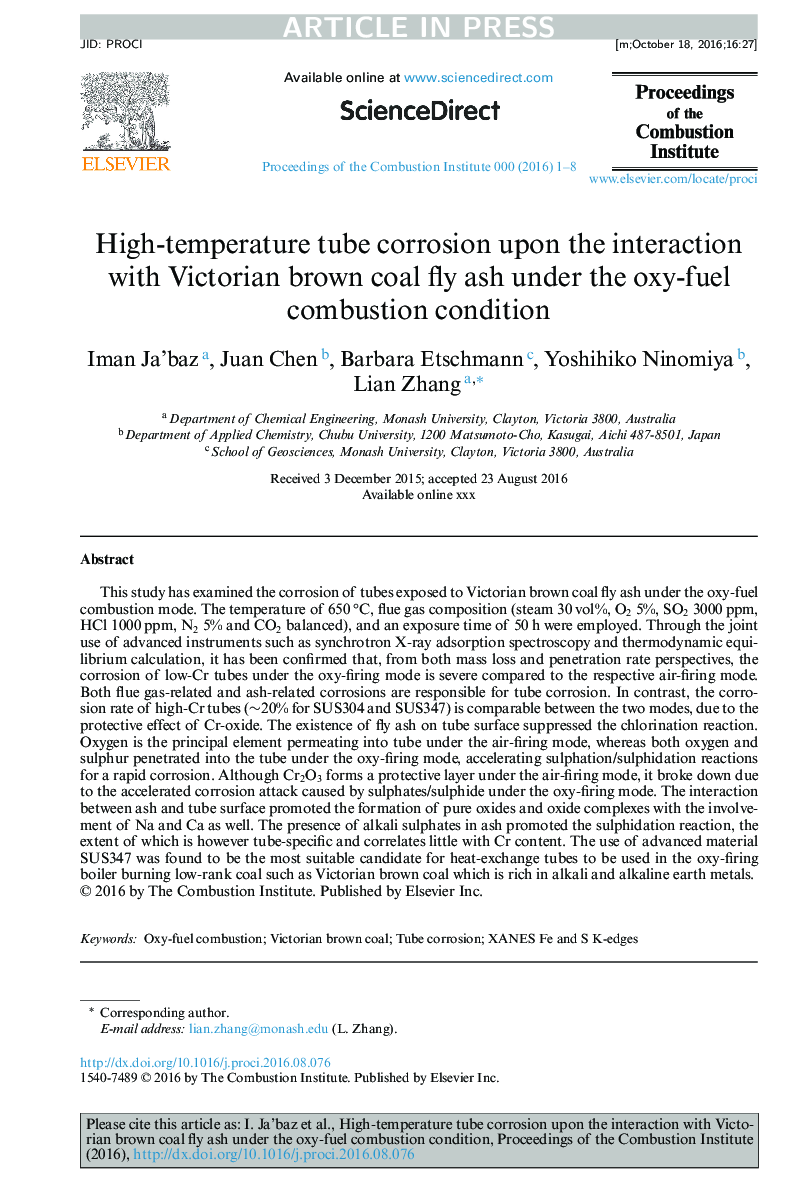| Article ID | Journal | Published Year | Pages | File Type |
|---|---|---|---|---|
| 4915453 | Proceedings of the Combustion Institute | 2017 | 8 Pages |
Abstract
This study has examined the corrosion of tubes exposed to Victorian brown coal fly ash under the oxy-fuel combustion mode. The temperature of 650 °C, flue gas composition (steam 30 vol%, O2 5%, SO2 3000 ppm, HCl 1000 ppm, N2 5% and CO2 balanced), and an exposure time of 50 h were employed. Through the joint use of advanced instruments such as synchrotron X-ray adsorption spectroscopy and thermodynamic equilibrium calculation, it has been confirmed that, from both mass loss and penetration rate perspectives, the corrosion of low-Cr tubes under the oxy-firing mode is severe compared to the respective air-firing mode. Both flue gas-related and ash-related corrosions are responsible for tube corrosion. In contrast, the corrosion rate of high-Cr tubes (â¼20% for SUS304 and SUS347) is comparable between the two modes, due to the protective effect of Cr-oxide. The existence of fly ash on tube surface suppressed the chlorination reaction. Oxygen is the principal element permeating into tube under the air-firing mode, whereas both oxygen and sulphur penetrated into the tube under the oxy-firing mode, accelerating sulphation/sulphidation reactions for a rapid corrosion. Although Cr2O3 forms a protective layer under the air-firing mode, it broke down due to the accelerated corrosion attack caused by sulphates/sulphide under the oxy-firing mode. The interaction between ash and tube surface promoted the formation of pure oxides and oxide complexes with the involvement of Na and Ca as well. The presence of alkali sulphates in ash promoted the sulphidation reaction, the extent of which is however tube-specific and correlates little with Cr content. The use of advanced material SUS347 was found to be the most suitable candidate for heat-exchange tubes to be used in the oxy-firing boiler burning low-rank coal such as Victorian brown coal which is rich in alkali and alkaline earth metals.
Related Topics
Physical Sciences and Engineering
Chemical Engineering
Chemical Engineering (General)
Authors
Iman Ja'baz, Chen Juan, Barbara Etschmann, Yoshihiko Ninomiya, Zhang Lian,
